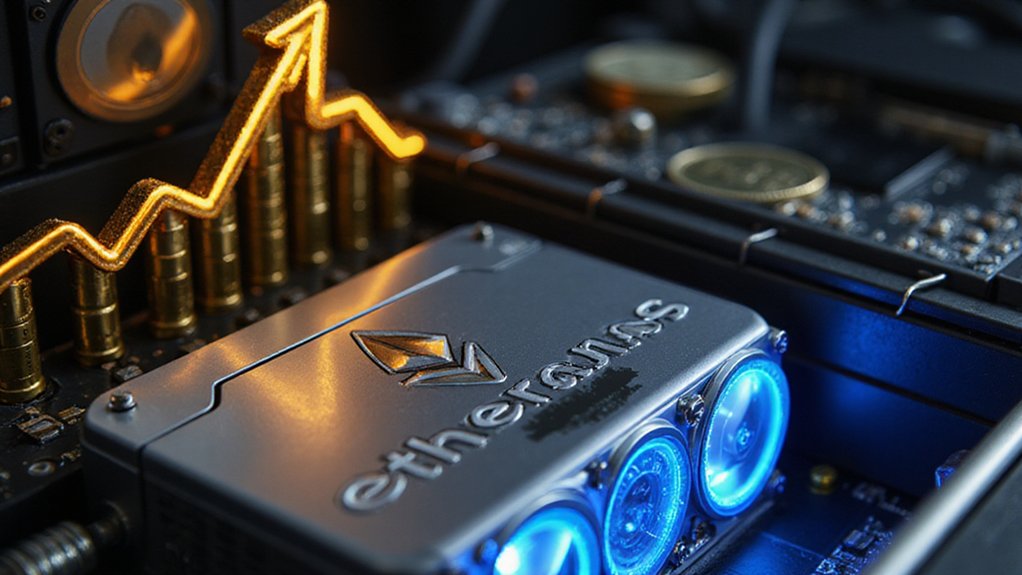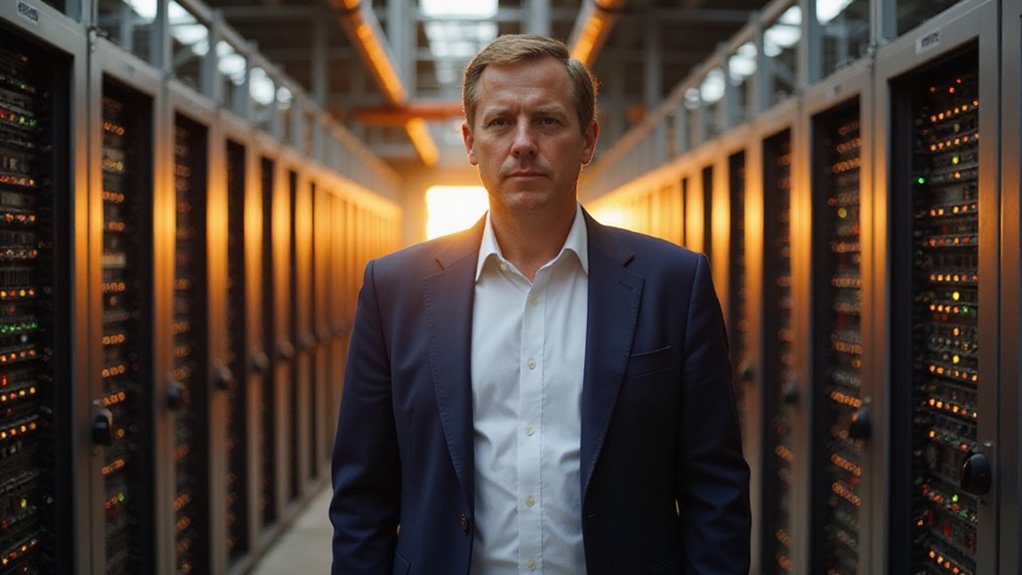Against astronomical odds that would make lottery tickets seem like safe investments, solo miners occasionally strike digital gold by discovering an entire blockchain block and claiming rewards that can exceed $350,000 in a single moment.
The recent triumph of a solo miner wielding 2.3 petahash of computational power exemplifies this phenomenon perfectly. Unlike pool mining—where rewards are distributed among participants like a particularly complex profit-sharing arrangement—solo mining operates on winner-take-all principles. The successful miner claimed the entire block reward, including both the coin subsidy and transaction fees, without surrendering percentages to pool operators or sharing with thousands of other miners.
Solo mining delivers the ultimate prize: claiming entire block rewards without surrendering percentages to pool operators or sharing with thousands of competitors.
This particular success story required more than mere luck, though fortune certainly played its part. Operating 2.3 petahash represents serious institutional-level commitment: specialized ASIC miners humming continuously, electricity bills that would make small businesses weep, and the technical sophistication to maintain full blockchain nodes while optimizing mining operations.
The miner fundamentally competed against massive mining farms and coordinated pools, armed with nothing but raw computational power and presumably nerves of steel. The current landscape reflects how increased mining difficulty has made such solo achievements increasingly rare compared to Bitcoin’s early days when individual miners could more easily compete for block rewards.
The probabilistic nature of block discovery makes solo mining resemble an elaborate gambling operation disguised as legitimate business activity. Miners can experience extended periods without rewards—potentially months of electricity costs accumulating while hardware depreciates—before potentially striking a jackpot worth hundreds of thousands of dollars.
The mathematical reality is unforgiving: insufficient hashrate relative to network difficulty typically results in wasted resources and mounting losses. Solo miners must solve complex cryptographic puzzles to verify transactions and successfully add new blocks to the blockchain, requiring substantial computational resources and technical expertise. The SHA-256 cryptographic function serves as the foundation for these computational challenges that miners must overcome.
What distinguishes this achievement from typical mining pool operations is the complete autonomy it represents. The solo miner maintained independent control over mining operations, participated directly in blockchain consensus without intermediaries, and benefited from what were likely substantial transaction fees during network congestion periods.
The timing proved fortuitous, as high-value transactions inflated the total block reward remarkably beyond standard coin subsidies.
This windfall underscores both the potential rewards and inherent risks of solo mining. While $350,000 represents life-changing money for most individuals, it required massive upfront investment in ASIC equipment, ongoing operational costs, and the technical expertise to maintain competitive mining operations.
The success story, though inspiring, remains an exceptional outcome in an industry where most solo miners face prolonged periods of unprofitability.







